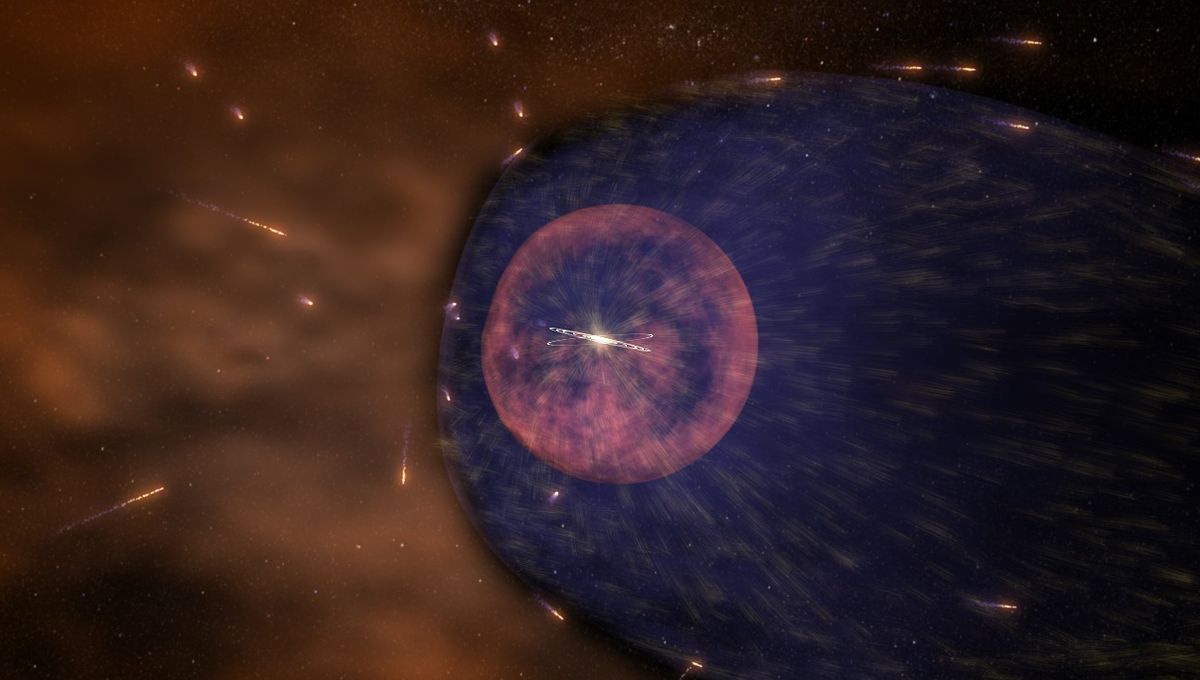
Humanity has been able to reach interstellar space only twice, thanks to the Voyager 1 and 2 probes, which have been traveling in space for over 45 years. During the last decade, they crossed the boundaries known as the termination shock and heliopause, the so-called edge of the Solar System where plasma originated from the Sun is no longer dominant and interstellar material becomes the major influence. Now, new research reveals something unexpected about these boundaries. They are not smooth, they actually have wrinkles.
The region where the solar wind is dominant is called the heliosphere. Despite the “sphere” name, it is only spherical on one side. The other side is elongated like the tail of a comet. The Voyager probes have crossed the spherical side, which is much closer to Earth. First, they went through the termination shock, where the speed of the solar wind is down to the speed of sound. Then there is the heliopause where the solar wind is being pushed back by the interstellar material flowing through the Milky Way.
Voyager 1 crossed this boundary in 2012 and Voyager 2 crossed it in 2018 providing crucial insights into the region. But another mission doesn’t need to go as far to observe the heliopause. NASA’s IBEX (Interstellar Boundary EXplorer) orbits Earth but tracks changes at the edge of the Solar System. Astronomers made use of a particular event back in 2014 when the pressure of the solar wind increased by 50 percent.
The data shows that the wave of particles reached the heliopause in 2015, creating ripples across the boundary of 1.5 billion kilometers (over 900 million miles). Particles were reflected back and forth between the termination shock and heliopause. The effect was so pronounced that the heliopause behind Voyager 1 moved forward of about 750 million kilometers (460 million miles) compared to its position in 2012. Voyager 1 remained in interstellar space but the heliosphere might have gotten really close to it.
Measurements in the direction of Voyager 2 are a bit more uncertain but it might have added a bit more road for the probe to reach interstellar space. The boundary between the Sun and the rest of the galaxy was known to change in size as the activity of the Sun changes every 11 years. This study shows that the changes might be more complex than previously thought and that the heliosphere is a wrinkly, rippling region, rather than a smooth one.
NASA’s Interstellar Mapping and Acceleration Probe (IMAP) will provide even more insight into this matter. It is expected to launch in 2025.
The study is published in Nature Astronomy.
Source Link: There Are Ripples At The Boundary Of Interstellar Space